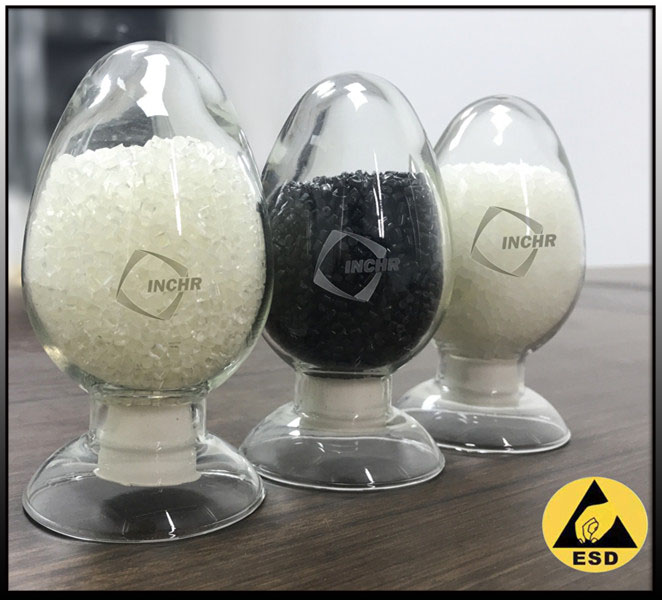Static electricity isn’t just a nuisance; it’s a costly, often invisible threat lurking in modern manufacturing. While ESD (Electrostatic Discharge) protection is synonymous with electronics, the strategic use of ESD Plastics is rapidly expanding across demanding industrial landscapes. This guide cuts through generic advice, focusing on critical applications and selection nuances often overlooked.
Why Standard Solutions Fail (The ESD Plastic Imperative)
Metals: Heavy, corrosive, expensive, often impractical.
Standard Plastics: Insulators that generate and hold dangerous charges.
Consequence: Component damage (instant/latent), production downtime, dust attraction, fire/explosion risks (flammable environments), data corruption.

ESD Plastics Demystified: Choosing the Right Weapon
Forget “anti-static” as a catch-all. Performance hinges on measurable Surface Resistance:
Conductive Plastics (< 10⁵ Ω/sq):
Action: Ultra-fast charge dissipation to ground. Some EMI shielding.
Core Uses: Sensitive IC packaging (trays, tubes), explosive environments (rapid charge removal), EMI enclosures, critical flooring.
Dissipative Plastics (10⁵ – 10¹¹ Ω/sq):
Action: Controlled, safe charge drainage to ground. Minimizes charge generation.
Core Uses: The EPA workhorse: work surfaces (mats, laminates), shelving, carts, tools, chairs, garments. General handling & assembly.
Anti-Static Plastics (Often > 10¹¹ Ω/sq):
Action: Primarily prevents initial charge generation (humidity-dependent). Very slow dissipation.
Core Uses: Outer packaging, dust covers. Not for primary ESD protection of sensitive items.
Strategic Applications: Where ESD Plastics Make the Difference
Automotive & Aerospace: Reliability & Safety Critical
Beyond ECUs: Protecting LiDAR sensors, camera modules, airbag electronics during assembly using dissipative fixtures/trays.
Fuel System Mandate: Conductive plastics (e.g., CF-filled HDPE/PP) for fuel lines, filler necks, containers – preventing static sparks igniting vapors (ISO/TR 20884 compliance is key).
Composite Safety: Dissipative work surfaces/tools prevent static build-up during CFRP layup/machining, avoiding sparks or contamination.
Medical & Pharma: Sterility Meets Safety
Device Protection: Safeguarding implantable electronics (pacemakers) and diagnostic equipment components.
Explosion Prevention: Conductive containers, hoppers, and ducting for handling potent APIs or flammable solvents (ATEX/IECEx compliance often required).
Cleanroom Integration: Non-shedding, cleanable, sterilizable (EtO/gamma/autoclave compatible) ESD plastics for device housings and equipment.
Industrial Automation: Ensuring Uptime & Precision
Machine Internal Protection: Dissipative components shield sensitive PLCs, drives, and vision systems within machinery from ESD during operation/maintenance.
Eliminating Static Cling: Dissipative/conductive gears, grippers, and guide rails prevent part misalignment and dust-induced jams in material handling (food, packaging, textiles).
Pneumatic Safety: Conductive tubing prevents static build-up from flowing powders/granules, reducing fire/explosion risks.
Electronics & Semiconductor (The Foundation)
Cleanroom Essentials: ESD plastics meeting SEMI outgassing/particle standards for wafer carriers (FOUPs/FOSBs), IC trays.
EPA Backbone: Dissipative workstations, shelving, mats; conductive flooring bonded to ground.
Safe Logistics: Conductive/dissipative totes, carts, shielded bags for transport.
Implementation Essentials: Beyond the Spec Sheet
Define the Threat: What sensitivity (HBM/CDM)? Environmental factors (chemicals, humidity, abrasion)? Regulations (ATEX, FDA, SEMI)?
Holistic Properties: Match mechanical strength, thermal tolerance, chemical resistance, and cleanroom needs alongside ESD performance.
Grounding is Non-Negotiable: ESD plastics are useless without a verified, bonded grounding system for surfaces, equipment, and personnel (tested daily!).
Maintenance = Performance: Clean with ESD-specific cleaners. Regularly test surface resistance and grounding continuity. Replace damaged items.
Beware Tribocharging: Friction between materials (even dissipative ones) can generate charge. Minimize contact/separation with insulators.
The Future: Smarter, Stronger Protection
Innovation focuses on advanced composites (nanotubes, graphene), Inherently Dissipative Polymers (IDPs) for humidity-independent performance, multi-functional materials (ESD + FR + EMI), and sustainable solutions (recycled content, recyclability).
Conclusion: ESD Plastics – An Industrial Necessity
ESD Plastics are a strategic engineering safeguard, vital far beyond the cleanroom. They protect valuable products, ensure personnel safety, prevent costly downtime and disasters, and underpin quality and reliability in automotive, pharma, automation, and electronics. Understanding the types, their specific roles, and rigorous implementation (especially grounding) is critical for any operation handling sensitive components or operating in hazardous environments. Invest wisely in this invisible shield.




